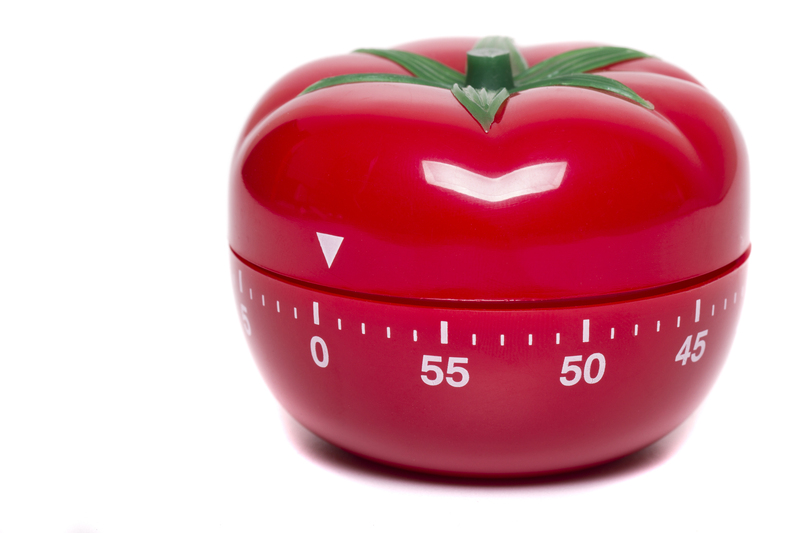Proven methods for getting rid of mould on window sills
Posted on 08/06/2025
Proven Methods for Getting Rid of Mould on Window Sills
Mould on window sills is a common issue in many homes, particularly in areas with high humidity or poor ventilation. Not only does it present unsightly stains and odours, but exposure to mould can also lead to health problems, such as respiratory issues and allergic reactions. Fortunately, there are numerous effective and safe methods for removing and preventing mould from your window sills. In this comprehensive guide, we'll discuss the most proven techniques for eliminating mould on window sills and provide you with practical tips for keeping your home mould-free.
Understanding Why Mould Grows on Window Sills
Mould needs certain conditions to thrive: moisture, warmth, darkness, and organic material. Window sills, especially those made of wood or unsealed materials, are particularly vulnerable due to:
- Condensation: Windows are natural cold spots in a room, making condensation a frequent issue, especially in winter.
- Poor Ventilation: Rooms with limited airflow trap excess moisture, feeding mould growth.
- Organic Residue: Dust, dirt, and household grime provide a food source for mould spores.
- Neglect: Unnoticed leaks or spills near windows can worsen the problem.

Signs of Mould Growth on Window Sills
Recognising the early signs of mould infestation on your window frames and sills helps prevent extensive damage. Look out for:
- Black, green, or brown spots or stains
- Musty, earthy odours near the window
- Peeling paint or warped wood
- Excessive condensation on glass or frames
- Allergy symptoms or increased respiratory issues at home
Proven Methods for Getting Rid of Mould on Window Sills
When tackling window sill mould, it's best to start with the least aggressive method before progressing to stronger solutions. Here's a list of proven cleaning strategies for mould on window sills:
1. Safety First: Before You Start
- Wear gloves: Protect skin from irritants and cleaning agents.
- Use a face mask: Prevent inhalation of mould spores.
- Ventilate the area: Open nearby windows and doors during cleaning.
- Cover floors: Lay down old towels or plastic sheets to catch debris.
2. Soap and Water: The Gentle Approach
If you catch the mould early or if it's only a light growth, a mixture of dish soap and warm water can do wonders:
- Mix a few drops of liquid dish soap with warm water in a bowl.
- Apply with a soft-bristled brush or cloth.
- Scrub gently to lift the mould from the window sill and frame.
- Wipe down with a clean damp cloth to remove any residue.
- Dry the area thoroughly with a towel.
3. Distilled White Vinegar: Natural & Effective
White vinegar is a popular home remedy for removing mould from window sills thanks to its acidity, which disrupts mould growth and kills up to 82% of mould species.
- Pour undiluted white vinegar into a spray bottle.
- Spray generously over affected areas.
- Let it sit for at least one hour to ensure full penetration and effectiveness.
- Scrub with a brush or sponge as needed.
- Wipe clean with warm water and dry thoroughly.
Tip: The smell of vinegar dissipates as it dries, but you can add a few drops of essential oil for a more pleasant aroma.
4. Baking Soda Paste: Stubborn Mould Remover
- Mix baking soda with a splash of water to create a paste.
- Spread the paste over mouldy patches on the window sill.
- Allow to set for 10-15 minutes; baking soda will help lift and absorb mould.
- Scrub gently, then wipe away with a damp cloth.
- Repeat if necessary for persistent stains.
Baking soda also helps deodorise the area and prevents mould regrowth.
5. Commercial Mould Removers
For more severe mould infestations or when home remedies aren't sufficient, you can turn to strong commercial mould removal sprays:
- Choose a non-toxic product if possible to protect indoor air quality.
- Follow all package directions and safety guidelines, including wearing gloves and masks.
- Apply, scrub, and rinse as instructed by the manufacturer.
- Ensure complete drying of the area after cleaning.
Popular brands: HG Mould Spray, Cillit Bang Black Mould Remover, Dettol Mould & Mildew Remover (always test in a small area first).
6. Hydrogen Peroxide Solution
Hydrogen peroxide is a mild anti-fungal and antibacterial agent that can help eradicate persistent mould on window sills:
- Use a 3% hydrogen peroxide solution in a spray bottle.
- Spray directly on the mould-affected area.
- Let sit for 10-15 minutes to break down mould structure.
- Scrub and wipe clean with a wet cloth.
- Dry the sill thoroughly after application.
7. Isopropyl Alcohol Solution
- Mix equal parts isopropyl alcohol and water in a spray bottle.
- Spray over the mouldy window sill and let sit for several minutes.
- Scrub and wipe away the mould.
- Isopropyl alcohol evaporates quickly, reducing the chance for further moisture build-up.
How to Remove Mould from Wooden Window Sills
Wooden window frames and sills are particularly vulnerable to mould due to their porous nature. Take extra care by:
- Using minimal water to avoid saturating the wood and causing further damage
- Applying vinegar or hydrogen peroxide with a cloth in small amounts
- After cleaning, sanding down any visibly damaged or rough spots
- Repainting or sealing your window sills with mould-resistant paint once dry
Do not use bleach on wood-- it can damage the material and is less effective than natural alternatives for embedded mould.
How to Prevent Mould from Returning on Window Sills
Once you've eliminated the visible mould, it's important to address the underlying causes. Here are the best preventive measures for avoiding mould on window sills:
- Promote better ventilation: Open windows or use extractor fans, particularly in kitchens and bathrooms.
- Use a dehumidifier: Control indoor humidity levels, ideally keeping them below 60%.
- Regularly clean window sills: Wipe them down weekly with an anti-mould solution or diluted vinegar.
- Repair leaks and window seals: Check and fix any water ingress points.
- Insulate your windows: Double-glazing and draft excluder strips can reduce condensation.
- Keep blinds and curtains open: Allow sunlight to reach the sills, as UV rays naturally inhibit mould growth.
- Position houseplants carefully: Overwatering plants near windows can worsen humidity problems.
When to Call a Professional Mould Remediation Service
While the methods above are effective for minor issues, you should contact a professional mould removal company if:
- The mould covers a large area (over 1 square metre) or keeps returning
- You suspect structural water damage or a hidden leak inside walls or ceilings
- Household members are experiencing severe allergies or asthma
- The mould is inside or behind the window frame, not just on the surface
Professional remediation ensures that all sources of moisture and mould are contained and treated, providing peace of mind and safe living conditions.

Frequently Asked Questions About Mould on Window Sills
Is bleach effective for removing mould on window sills?
Bleach is often cited as a mould killer. However, it's not recommended--especially on wood or porous materials--because it does not penetrate deeply enough to kill all spores. Natural alternatives like vinegar and hydrogen peroxide work better and are safer for your health.
How often should I clean my window sills to prevent mould?
For best results, wipe down your window sills at least once a week, especially during high-humidity months or after rain. Use diluted vinegar or a specialist anti-mould spray for ongoing protection.
Can mould on window sills make you sick?
Yes. Mould exposure can cause respiratory problems, allergies, asthma flare-ups and skin irritation. Young children, the elderly, and those with pre-existing health conditions are most at risk. Prompt removal and prevention are crucial.
What causes recurring mould on my window sills?
Persistent condensation, leaks, and inadequate ventilation are the usual suspects for recurring mould. Double-check nearby plumbing, window seals, and insulation for hidden causes.
Are there any long-term solutions for window sill mould?
Yes. Long-term measures include improving home ventilation, using dehumidifiers, regularly maintaining windows and sills, and repainting with anti-mould primers or paints. Addressing the root cause is vital for lasting results.
Conclusion: Say Goodbye to Mould on Window Sills for Good
Mould on window sills isn't just an eyesore--it poses risks to your home and your health. By using the proven cleaning methods outlined above--soap and water, vinegar, baking soda, commercial cleaners, hydrogen peroxide, and alcohol--you can safely remove mould and keep your sills spotless. Remember, consistent prevention through improved ventilation and regular cleaning is the best strategy for keeping mould away from your windows for good.
Don't let mould compromise your living environment. With these tips and practical steps, your window sills will remain clean, fresh, and healthy all year round!
- For more expert cleaning advice and home maintenance tips, browse our related articles or contact a professional for help with severe cases.




